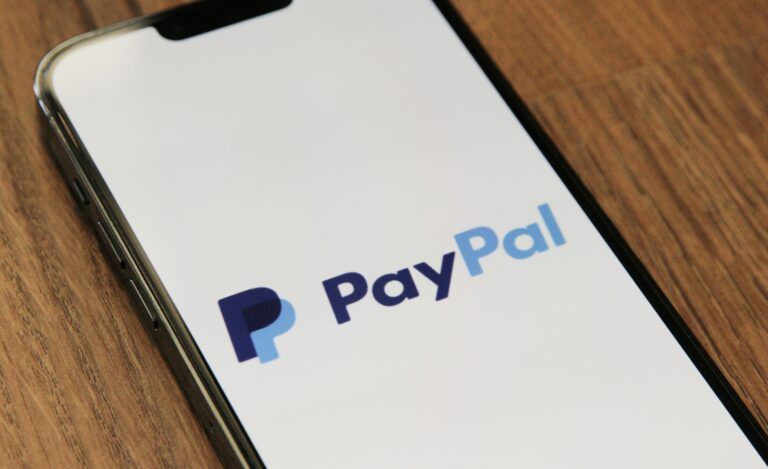Virtual cards are revolutionizing the way consumers shop online and manage finances. These digital-only payment methods offer a secure, convenient alternative to traditional plastic credit cards.
In this post, we’ll explore what virtual cards are, how they benefit both customers and merchants, and their role in the world of subscriptions and recurring payments.
PROTECT YOUR SUBSCRIPTION BUSINESS FROM DECLINES
What is a Virtual Card?
A virtual card is a unique, randomly generated credit card number that cardholders can use for online purchases without exposing their actual credit or debit card details. It functions exactly like a traditional plastic card, complete with a 16-digit number, expiration date, and CVV security code. It also runs on the same credit card network as the main account (i.e., Visa, Mastercard, etc.). The key difference is that a virtual card exists only in digital form – there is no physical card associated with the number.
When an account holder create a virtual card, it is linked to their real credit card or bank account, but acts as a secure middleman for transactions. The virtual card number is what they provide to the merchant, keeping the primary account number hidden. This adds an extra layer of protection against fraud and data breaches, as sensitive financial information is never directly shared with the seller.
Virtual cards can be generated instantly through a card issuer’s mobile app or website, and can be set for single-use or recurring transactions. Some providers even allow users to set custom spending limits and expiration dates on each virtual card, giving them granular control over their online spending.
One of the most significant advantages of virtual cards is their disposable nature. If a virtual card number is ever compromised in a data breach or unauthorized charge, that specific card can simply be canceled without impacting the primary account. This is much more convenient than having to cancel and replace a main credit or debit card.
START ACCEPTING ALL TYPES OF CREDIT CARDS YOUR CUSTOMERS USE
How Do Virtual Cards Benefit Customers?
Virtual cards offer a range of compelling benefits that make them an attractive choice for security-conscious shoppers and savvy financial managers alike. Let’s explore some of the key advantages in more detail:
Enhanced Security Through Unique, Disposable Card Numbers
One of the most significant benefits of virtual cards is the added layer of security they provide. When someone uses a virtual card number for an online purchase, the actual credit card or bank account details are never exposed to the merchant. This means that even if the seller’s database is hacked or the virtual card number is stolen, the primary account remains safe and secure.
Moreover, virtual cards are often one-time use or merchant-specific, meaning they can only be used for one transaction or with a particular seller. This disposable nature makes them ideal for online payments where you may not fully trust the merchant or want to avoid potential recurring charges.
Simplified Budgeting with Spend Controls and Category-Specific Cards
Virtual cards can also be a powerful tool for budgeting and expense management. Many card issuers allow cardholders to set custom spending limits on each virtual card they create, helping them stay within their budget for specific purchases or categories.
For example, you could create a virtual card with a $500 limit for online shopping, another with a $50 monthly limit for streaming subscriptions, and a third with a $1000 limit for travel bookings. By compartmentalizing spending in this way, you can easily track and control your expenses without the need for complex spreadsheets or budgeting apps.
Easy Subscription Management and Cancellation
Managing multiple subscriptions can be a headache, especially when it comes to updating payment details or canceling services. With virtual cards, however, subscribers can create a unique card number for each subscription service they use. This not only helps them track their subscription spending more easily, but also simplifies the cancellation process.
If they decide to cancel a subscription, they can simply close the associated virtual card without affecting their other services. This is much more convenient than updating their payment details across multiple accounts or risking unwanted charges on their primary credit card.
Instant Card Lock and Replacement if Compromised
In the unfortunate event that a virtual card number is compromised or used for an unauthorized transaction, the cardholder can respond quickly and decisively. Most card issuers allow them to instantly lock or cancel a virtual card through their mobile app or website (e.g., Apple Pay, Google Pay, Capital One, American Express), preventing any further fraudulent charges.
Moreover, a new virtual card can easily be generated to replace the compromised one, ensuring that legitimate subscriptions and transactions are not interrupted. This is a significant advantage over physical credit cards, where a single compromised number can necessitate the cancellation and replacement of the entire card.
How Do Virtual Cards Benefit Merchants?
While virtual cards are primarily designed to enhance security and convenience for customers, they also offer significant advantages to the merchants who accept them. Let’s explore some of the key ways virtual cards create value for online sellers:
Reduced Fraud Risk Due to Masked Account Details
One of the most significant benefits of virtual cards for merchants is the reduced risk of fraud. When a customer uses a virtual card number for an online purchase, their actual credit card or bank account details are never exposed to the merchant. This means that even if the merchant’s database is compromised in a data breach, hackers would only gain access to the virtual card numbers, which can be easily cancelled and replaced without impacting the customer’s primary account.
This added layer of security helps protect merchants from the costly consequences of fraud, such as chargebacks, fees, and reputational damage. By accepting virtual cards, merchants can minimize their liability and maintain a more secure transaction environment for their customers.
Increased Sales from Security-Conscious Customers
Today, consumers are increasingly aware of the risks associated with online shopping, such as identity theft and unauthorized charges. By accepting virtual cards, merchants can tap into the growing market of security-conscious customers who prefer to use these secure payment methods.
Suggesting and promoting the use of virtual cards can be a competitive advantage, attracting customers who prioritize security and peace of mind when making online purchases. This can lead to increased sales and customer loyalty, as shoppers feel more confident in transacting with merchants who actively work to protect them.
Opportunities for Data-Driven Insights and Targeted Offers
Virtual cards can provide merchants with valuable data insights into customer spending habits and preferences. While the actual account details are masked, virtual card transactions still generate data on purchase amounts, frequencies, and categories.
Merchants can leverage this data to gain a better understanding of their customers’ needs and behaviors, enabling them to create targeted marketing campaigns, personalized recommendations, and loyalty programs. By analyzing virtual card transaction data, merchants can optimize their product offerings, pricing strategies, and customer engagement efforts to drive growth and profitability.
Streamlined Recurring Billing with Automatic Card Updates
For merchants who offer subscription-based services or recurring billing, virtual cards can significantly streamline the payment process.
Moreover, the use of virtual cards for recurring billing can help reduce the incidence of friendly fraud or chargeback abuse. Since customers are actively involved in setting up and managing their virtual cards for subscriptions, there is less likelihood of disputes arising from forgotten or unrecognized charges.
YOUR PARTNER FOR SEAMLESS RECURRING TRANSACTIONS
Which Data Levels Can Be Associated with Virtual Cards?
Virtual card transactions, like traditional credit card payments, can be processed at different data levels depending on the amount of information provided. Understanding these data levels is important for merchants, as higher levels of data can lead to lower interchange rates and more detailed insights into customer spending habits.
Level 1: Basic Card Details for Standard Processing
Level 1 is the most basic level of data required for standard credit card processing, including virtual card transactions. At this level, merchants typically capture and submit the following information:
- Cardholder name
- Card number (virtual card number in this case)
- Expiration date
- Transaction amount
- Merchant category code (MCC)
- Date of the transaction
This fundamental data is sufficient for most consumer-level transactions and is the minimum requirement for processing virtual card payments. However, providing only Level 1 data may result in higher interchange rates for the merchant.
If you opt to accept even more details, like the customer’s billing address, CVV code, and phone number, then your relationship with the payment processor improves.
Level 2: Additional Customer Info for Lower Interchange Rates
Level 2 data includes all the information from Level 1, plus additional details that can help merchants qualify for lower interchange rates and improve the likelihood of chargeback disputes. The specific data requirements may vary between payment card networks, but generally, Level 2 data includes:
- Customer code (for business/purchasing cards)
- Sales tax amount
- Merchant postal code
- Merchant tax ID number
- Invoice number
- Order number
By providing Level 2 data, merchants demonstrate a higher level of transparency and risk mitigation, which can lead to reduced interchange fees. This level of data is particularly beneficial for merchants who process a significant volume of B2B transactions using virtual cards.
Level 3: Line-Item Details for Large B2B Transactions
Level 3 data is the most comprehensive level of information that can be associated with virtual card transactions. This level is typically required for large B2B or government transactions and includes all the data from Levels 1 and 2, plus detailed line-item information such as:
- Item description and product codes
- Item quantities and unit of measure
- Item price and extended amount
- Freight/shipping amount
- Duty amount
- Destination postal code
- Discount amount and VAT/tax rate (if applicable)
By providing Level 3 data, merchants can access the lowest possible interchange rates for virtual card transactions. This granular level of data also enables more accurate reconciliation, spend analysis, and VAT/GST reclamation for B2B and government customers.
It’s important to note that not all virtual credit card issuers and payment processors support Level 2 and Level 3 data. Merchants should work closely with their payment partners to ensure they have the necessary systems and processes in place to capture and submit the required data levels for virtual card transactions.
How VAU and MAU Help Ensure Successful Recurring Payments
Visa Account Updater (VAU) and Mastercard Automatic Billing Updater (ABU/MAU) are powerful tools that help merchants ensure successful recurring payments and subscriptions when customers use virtual cards. These services work behind the scenes to keep card details current, reducing payment declines and involuntary churn.
Seamless Updates of Expiration Dates and Card Numbers
One of the primary challenges with virtual cards is their often short expiration dates and frequent card number changes for security purposes. VAU and MAU automatically provide merchants with updated card details, including new expiration dates and card numbers, when virtual cards are renewed or replaced by the issuer.
This means that even if a customer’s virtual card expires or is replaced, the merchant will receive the new card information without any action required from the customer. This seamless updating process ensures that recurring payments can continue uninterrupted, reducing the risk of declined transactions due to outdated card details.
Reduced Declines and Involuntary Churn
Payment declines are a major source of involuntary churn for subscription businesses. When a recurring payment fails due to expired or invalid card details, the customer’s service may be interrupted, leading to dissatisfaction and potential cancellation.
By keeping virtual card details up-to-date, VAU and MAU significantly reduce the incidence of payment declines. Merchants are less likely to lose customers due to failed transactions, as the updated card information allows for successful recurring charges. This helps maintain steady cash flow and reduces the costs associated with customer reacquisition.
Improved Customer Experiences Through Uninterrupted Service
From the customer’s perspective, VAU and MAU ensure a seamless subscription experience when using virtual cards. Customers don’t have to worry about updating their payment details every time their virtual card expires or is replaced, as the merchant automatically receives the new information.
This means that customers can enjoy uninterrupted access to the services they’ve subscribed to, without the hassle of manually updating their billing information. This convenience and reliability can lead to higher customer satisfaction and long-term loyalty.
Operational Efficiencies for Merchants
Managing expired or invalid payment details can be a time-consuming and costly process for merchants. Without automatic updating services like VAU and MAU, merchants would need to reach out to customers individually to obtain updated card information, which can strain customer service resources.
By automating the card updating process, VAU and MAU help merchants streamline their operations and reduce the administrative burden associated with managing recurring payments. Merchants can save time and money that would otherwise be spent on chasing down updated payment details, allowing them to focus on delivering value to their customers.
DIRECTPAYNET IS YOUR PARTNER FOR SECURE, SEAMLESS SUBSCRIPTIONS









